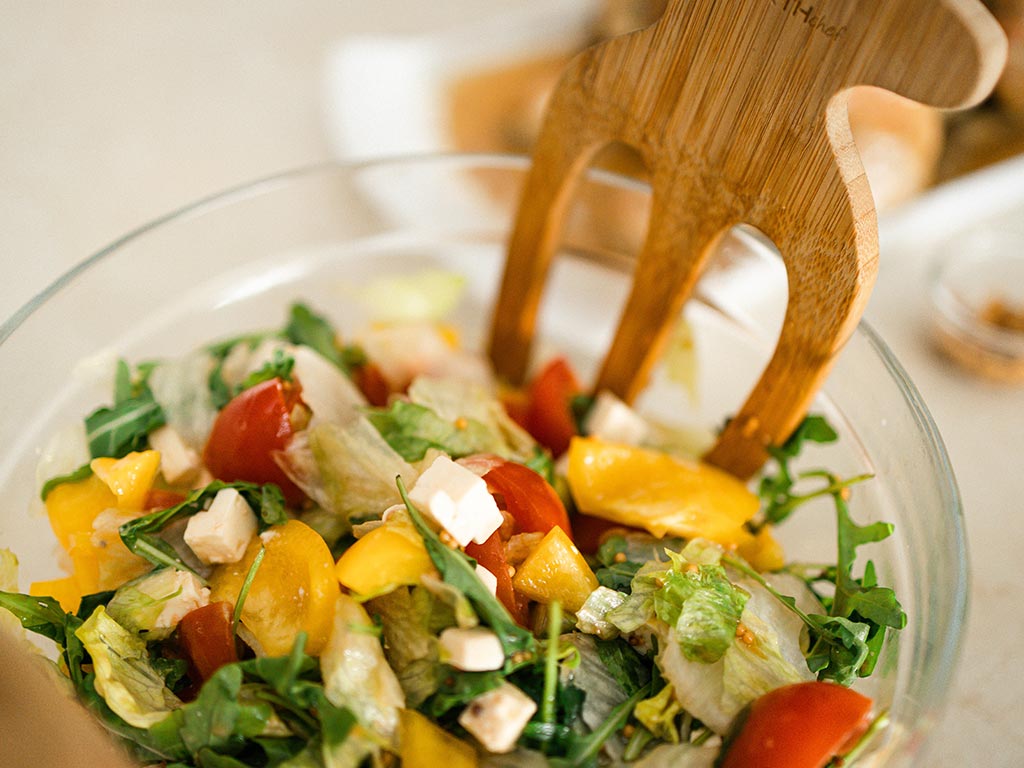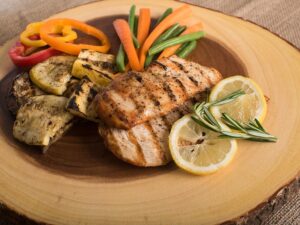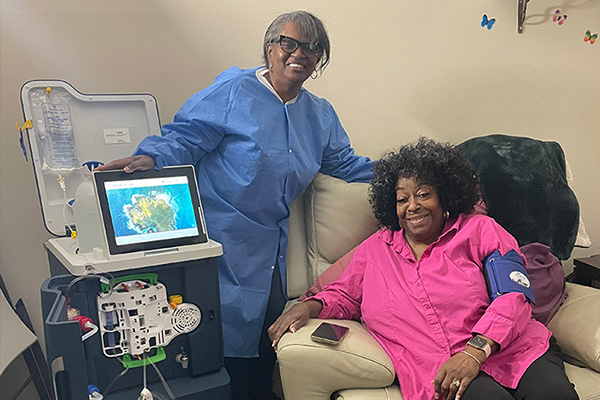4 Eating and Nutrition Tips for Hemodialysis Patients

Summary
Ryan Woolley, Director of Public Education at the patient-centered American Kidney Fund, offers tips for patients looking to eat well and thrive on hemodialysis, and overviews AKF’s Kidney Kitchen.
What are some specific nutrition concerns for hemodialysis patients to keep in mind?


Ryan Woolley, MSPH, RDN, is the Director of Public Education at the American Kidney Fund. She is an experienced public health professional and a registered dietitian nutritionist with an extensive background in both public health research and program evaluation.
Following a kidney-friendly food and fluid plan is very important for your health when you are in kidney failure and are on dialysis. To feel and do your best on dialysis, you will need to change how you eat and drink. You will need to eat more protein, while limiting fluid, salt, potassium and phosphorus. This will help to control your blood pressure and prevent fluid retention between treatments.
Nutritional needs will depend on the type of dialysis treatment a person does and how often. For example, more frequent home hemodialysis may add flexibility to what you can eat and drink. Consult with your doctor about your specific health and diet concerns.
What Are Your Top Four Nutrition Tips for Hemodialysis Patients?

#1 Get Your Protein
When you are on dialysis, your protein needs are higher. Dialysis removes some of your body’s blood proteins, so you will need to eat more of this nutrient to help make up for the amount you lose during your dialysis treatments. Lean protein sources include eggs, chicken, fish, turkey, beans and soy products.
There are lots of ways to get your protein! See the AKF Kidney Kitchen Protein Food Guide.
#2 Limit Your Sodium, Potassium and Phosphorus
These nutrients are found in most foods you eat, some in larger quantities than others. When you are on dialysis, your body isn’t able to keep sodium (salt), potassium and phosphorus in balance as well as it should. Check labels and limit foods with these ingredients.
Dining out while watching your sodium, potassium and phosphorus can seem overwhelming. See the AKF Kidney Kitchen Dining Out Guide for some helpful tips.

#3 Avoid Fluid Retention
When on dialysis, you often do not urinate as much as you are used to, or at all. Dialysis removes extra fluid from your body, so eating and drinking too much can cause fluid to build up between your dialysis treatments. Fluid retention can be dangerous and cause problems like high blood pressure, trouble breathing, swelling, lung infections, decreased blood proteins or even heart failure. Limiting your fluids will help you feel better and stay healthier. It can be challenging, but there are ways to do it.
Remember, fluid is more than just the water you drink! Everything that turns to liquid at room temperature counts toward your daily fluid intake. This includes ice, soups, ice cream, popsicles, all beverages, pudding and jello. The amount of fluid you can have each day will depend on your hemodialysis schedule. Work with your doctor and dietitian to see how much fluid you can consume each day to keep the fluid in your body in balance.
#4 Consult a Dietitian
A kidney-friendly eating plan is complex and unique to you, and could depend on other conditions you have, medications you may be on and your lab values. A registered dietitian nutritionist (RDN) can help you create and follow a kidney-friendly food and fluid plan.
Remember, food is meant to be enjoyed. Think about all the foods you can eat on a kidney-friendly plan instead of focusing on those you can’t.
READ MORE
- Kidney Health 101
- Can You Travel on Home Dialysis?
- Meet Diabetic Kidney Disease Patient Erin
What is AKF Kidney Kitchen?
The American Kidney Fund (AKF) works on behalf of the 37 million Americans living with kidney disease, and the millions more at risk, with programs that support people wherever they are in their fight—from prevention through post-transplant living.
In 2019, AKF launched the Kidney Kitchen® website, dedicated to helping people with kidney disease navigate healthy eating, supported by a multidisciplinary team of culinary and nutrition experts. In Kidney Kitchen, patients can take a deep dive into what each nutrient means for people with kidney disease, and how much of these nutrients common foods contain. Readers can also learn what healthy eating means for people in every stage of kidney disease, including those on dialysis or living with a kidney transplant. The site focuses on what you can eat and drink, rather than what you cannot, to empower people to make positive food and fluid choices without feeling burdened or discouraged.
Watch the video below to learn more:
Photo at the top of this page: Brooke Lark on Unsplash
* Tablo Hemodialysis System Disclaimer:
The information, including but not limited to, text, graphics, images and other material contained on this website is for informational purposes only. No material on this site is intended to be a substitute for professional medical advice, diagnosis or treatment. Always seek the advice of your physician or other qualified healthcare provider with any questions you may have regarding a medical condition or treatment and before undertaking a new healthcare regimen, and never disregard professional medical advice or delay in seeking it because of something you have read on this website.

